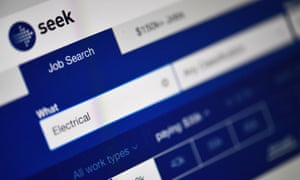Extract from The Guardian
For most people, the chances of getting a job are little better than they were two months ago
The latest data on jobs and people accessing jobseeker suggests that while generally things did not get much worse during August, neither did they improve very much.
One key misunderstanding about unemployment is the belief that to be unemployed means you have to be on jobseeker (or the youth allowance). While there is usually a strong link between the two, the reality is you can be unemployed and not be on jobseeker, and you can also be on jobseeker and not be unemployed.
The bureau of statistics doesn’t ask if you are on jobseeker when it surveys the monthly labour force figures, just if you are looking for work. And you are able to work while accessing jobseeker, so you are not necessarily unemployed.
The Department of Social Services has the data, but only releases it monthly. The government had agreed to provide fortnightly data to the Senate committee on Covid-19. Alas, as the ALP’s Andrew Leigh noted in parliament last week, they have failed to keep that promise.
They even missed the deadline of the last Friday of every month to provide the latest monthly figures. The August figures were only provided on Tuesday.
The data shows that the jobseeker numbers have increased well above even the current large numbers of unemployed, but that since May there has been very little change:
Now of course we could blame this on Victoria, but across all states there has been little recovery:
These figures suggest that we should not see any great improvement in the next unemployment figures out next week.
But we can say at least there has been some recent good news.
The latest payroll job figures released on Tuesday show that the seven days to 22 August saw the best weekly increase in jobs since the beginning of July.
Unfortunately the 0.6% growth came off the back of three weeks of falling jobs numbers:
As it is, New South Wales and Queensland have recovered around two-thirds of all jobs lost during the pandemic, while Victoria still has 90% of the recovery to go:
But overwhelmingly the big recovery occurred in May and June, and has slowed since then. If NSW keeps recovering jobs at the pace it has in July and August, it will take another nine months to get back to the same number of jobs the state had in March.
That actually would not be too bad considering in the 1990s recession it took 44 months for NSW to recover all of its the job losses.
The latest quarterly job account figures released yesterday by the ABS give some real numbers to the big percentage fall we have seen among these weekly payroll job indexes.
In the June quarter there were some 930,000 fewer jobs than in the first three months of the year – a 6.4% fall.
The big carnage occurred in secondary jobs – ie those part-time jobs held by someone who has another “main job”:
Few people work a second job for the joy of it – you mostly work two jobs because the pay from one job is not enough to survive on.
And while a 5.5% loss in “main jobs” seems small by comparison, consider that during the GFC the biggest quarterly fall in main jobs was just 0.3%. And also while secondary jobs fell in greater percentage terms, more people work just one job – and that is where the vast majority of job losses has occurred:
Eighty percent of all jobs lost have been main jobs.
The labour accounts also showed that in June the number of vacancies fell by 42% - down to just 131,800 vacancies.
When you consider that there were more than 1.6 million people accessing jobseeker or the youth allowance at the time that makes for around 12 people on unemployment benefits per vacancy.
Given the slow job recovery and vast number of people still accessing jobseeker, that does not square with the government’s view that now is the time to cut the bonus payment.
For most people, the chances of getting a job are little better than they were two months ago, but they will soon have to survive on less money.

No comments:
Post a Comment